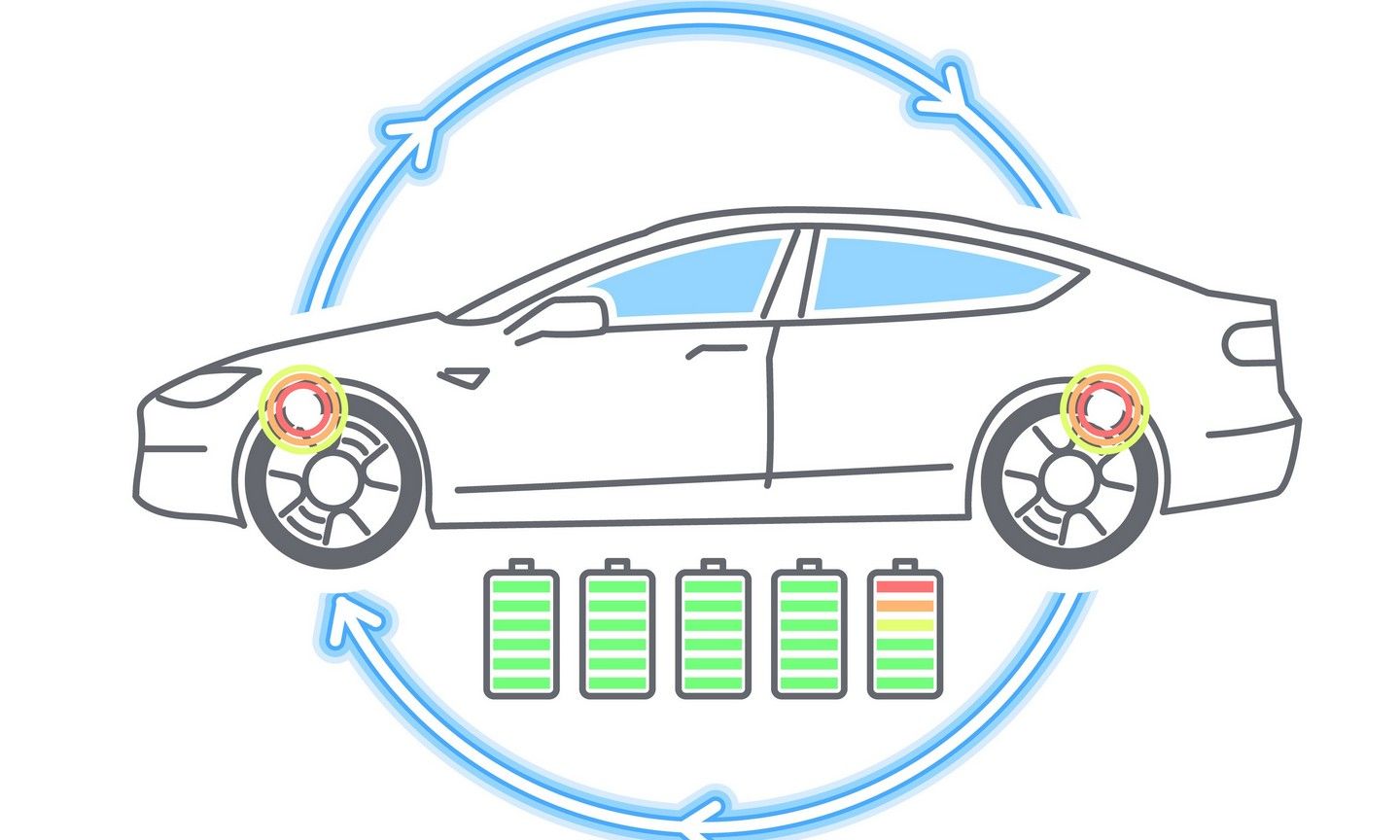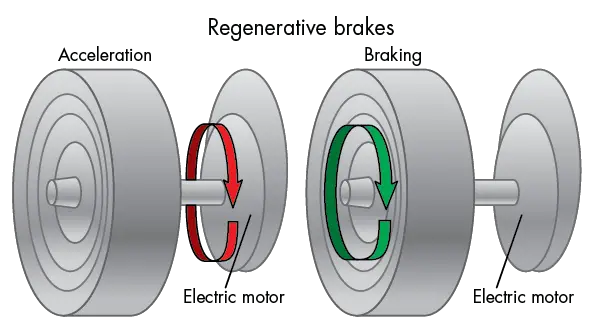What Is Regenerative Braking?
Regenerative braking is a technology used on electric vehicles to recharge the battery that powers the cars and to assist the hydraulic braking system in stopping the vehicles.


Regenerative braking is a technology used on electric vehicles to recharge the battery that powers the cars and to assist the hydraulic braking system in stopping the vehicles.
When the driver removes their foot from the accelerator pedal and coasts or applies the brakes, the EV motor(s) spins in reverse and acts as a generator to recharge the hybrid or EV battery (s). The energy applied as resistance on wheels helps slow down the vehicle without using the conventional brakes (the pads and rotors at each wheel).
When the vehicle's driver applies brakes, the kinetic energy, described as an object's energy in motion, provides all or most of the power to stop but until the driver uses the brake pedals. When the hydraulic system becomes active, squeeze the brake pads on the opposite side of the rotors.
That's why pads and rotors can last longer on hybrids and EVs than on vehicles powered solely by internal combustion engines. Regenerative braking does most of the early work to stop the car, and the hydraulic brakes are not heavily involved until the vehicle is close to a halt. The hydraulic system will engage once the panic stops from high speeds.

Vehicles with regular brakes also develop kinetic energy, but the power converts into heat created by the pads' friction against the rotors during braking. That energy dissipates into the air and is wasted.
With regenerative braking, 70% of the energy is said to be captured and used to recharge the batteries or slow the vehicle. The amount that's captured depends on how a car is driven, much as fuel economy depends on driving style.
On EVs and PHEVs, regen braking can recharge the batteries only in small amounts; the vehicles still need to be plugged into charging stations to recharge the batteries fully.




